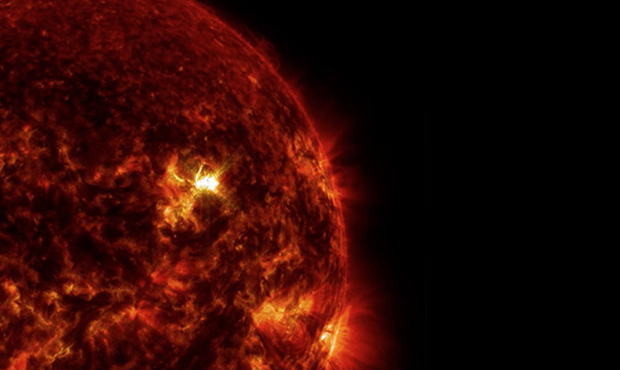Marking the 159th anniversary of the Carrington Solar Flare event
Sep 4, 2018, 3:13 PM | Updated: Sep 5, 2018, 9:46 am

(Flickr/NASA)
(Flickr/NASA)
Solar flares come and go and the Earth is showered by our Sun with a constant stream of powerful and potentially dangerous particles.
One major solar flare event occurred back on Sept. 2, 1859, and was one of the most powerful solar events ever witnessed by humans.
Richard Carrington, a British astronomer, was witness to a visual white light flare, which hurled a huge solar Coronal Mass Ejection, or CME, towards the Earth.
This powerful CME reached the Earth in a near record time of some 17.6 hours — much faster than many of the other solar storm particles.
The Earth was to be hit with one of the most powerful displays of solar radiation in all of recorded history. This CME was so powerful that the aurora was seen in latitudes as far south as Mexico and the equator.
Equally amazing is the fact that miners in Colorado witnessed the brightest of aurora, thinking that the sun was about to rise, as they started to prepare breakfast for the camps.
In this pre-digital world, the best form of long distance communication was the telegraph.
Many railroad telegraph operators saw power lines and telegraph lines spark with the induction of this solar particle storm, cutting off communications.
If this had been today, we would have witnessed the near total destruction of any power grid or cell phone communications not shielded or placed in Faraday cages or bags.
Solar flares are measured at the top levels with the designation of X!
Solar physicists tell us that the 1859 Carrington Event, was classified as an X 45 on the flare scale.
They also tell us that this type of flare may occur with a frequency of nearly 100 years!
They also tell us that the most powerful flare that our sun could produce, due to its size and classification, would be an X 200 flare. These monster flares are thought to occur once every 15,000 years.
Another of these super flares would be an X 100 flare, which has the possibility of occurring once in every 500 years on average.
We are now at the end period of Solar Cycle 24 and soon to be entering the next cycle, in 2019, Solar Cycle 25.
Solar Cycle 25 will peak again in the year 2025!
During the past few cycles, the Nov. 4, 2003 “Halloween storm” produced a flare which did not hot the Earth directly, but just passed us by. That storm was rated as an X 35 on this power scale.
The simple point is this: We here on Earth depend so much on the new digital technology of the day and we are most susceptible to the massive damage which will come from another Carrington Event!
The power grid and other critical infrastructure need to be protected as best as possible, along with a greater study of our nearest star, the Sun!
The Sun has been shining for some 4 billion years and should do the same for another 4 billion years!
Listen to Dr. Sky on KTAR News 93. FM every Saturday at 3 a.m.
To print your very own September 2018 star chart, click here.
To view satellites/dates/times of passage, click here.








